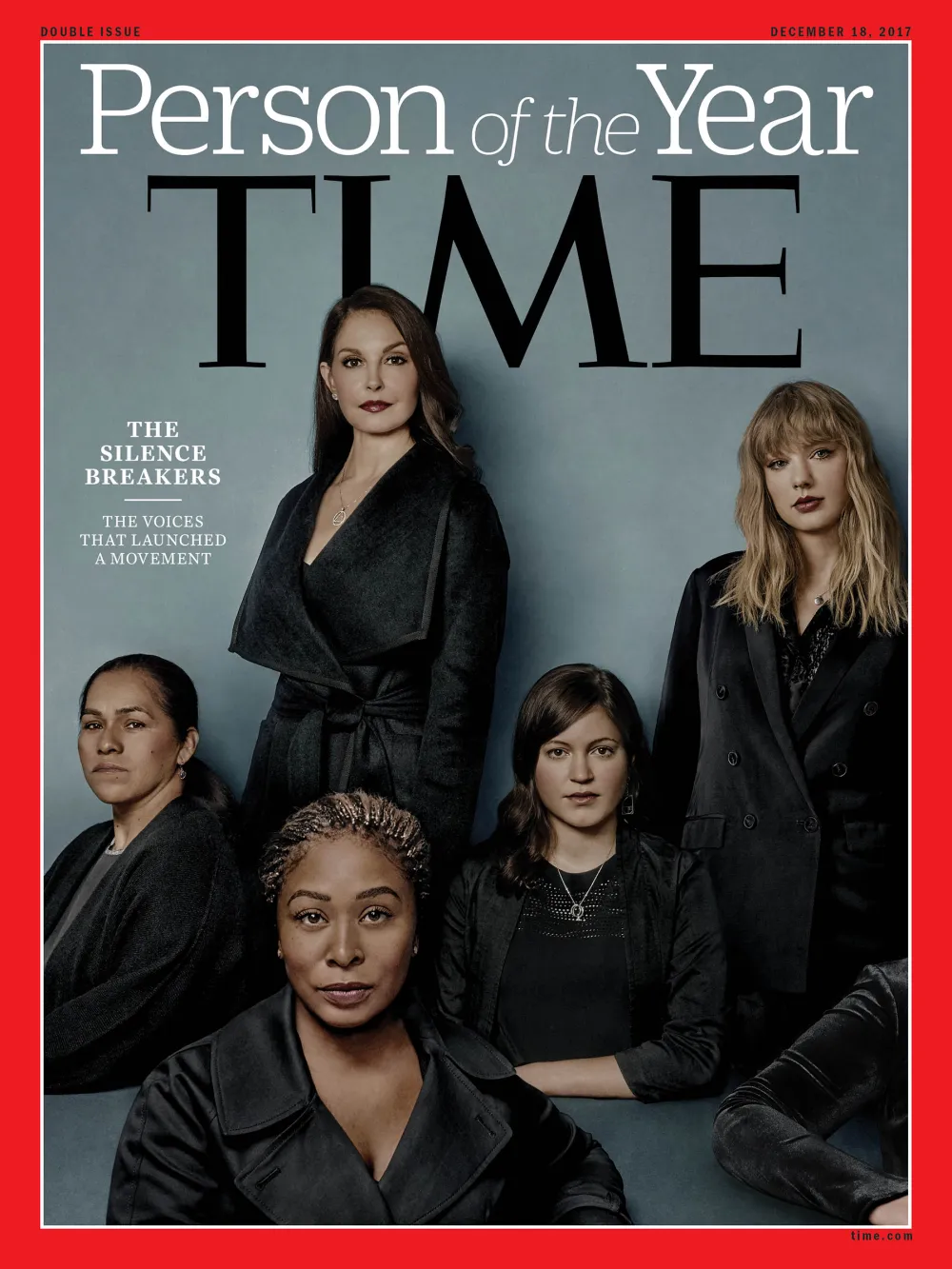Short List
Person of the Year
The Short List
The Choice
Edward Felsenthal
TIME’s editor-in-chief on why the Silence Breakers are the Person of the Year
It became a hashtag, a movement, a reckoning. But it began, as great social change nearly always does, with individual acts of courage. The actor who went public with the story of movie mogul Harvey Weinstein’s “coercive bargaining” in a Beverly Hills hotel suite two decades earlier. The strawberry picker who heard that story and decided to tell her own. The young engineer whose blog post about the frat-boy culture at Silicon Valley’s highest-flying startup prompted the firing of its founder and 20 other employees. The California lobbyist whose letter campaign spurred more than 140 women in politics to demand that state government “no longer tolerate the perpetrators or enablers” of sexual misconduct. A music superstar’s raw, defiant court testimony about the disc jockey who groped her.

The galvanizing actions of the women on our cover—Ashley Judd, Susan Fowler, Adama Iwu, Taylor Swift and Isabel Pascual—along with those of hundreds of others, and of many men as well, have unleashed one of the highest-velocity shifts in our culture since the 1960s. Social media acted as a powerful accelerant; the hashtag #MeToo has now been used millions of times in at least 85 countries. “I woke up and there were 32,000 replies in 24 hours,” says actor Alyssa Milano, who, after the first Weinstein story broke, helped popularize the phrase coined years before by Tarana Burke. “And I thought, My God, what just happened? I think it’s opening the floodgates.” To imagine Rosa Parks with a Twitter account is to wonder how much faster civil rights might have progressed.
The year, at its outset, did not seem to be a particularly auspicious one for women. A man who had bragged on tape about sexual assault took the oath of the highest office in the land, having defeated the first woman of either party to be nominated for that office, as she sat beside a former President with his own troubling history of sexual misconduct. While polls from the 2016 campaign revealed the predictable divisions in American society, large majorities—including women who supported Donald Trump—said Trump had little respect for women. “I remember feeling powerless,” says Fowler, the former Uber engineer who called out the company’s toxic culture, “like even the government wasn’t looking out for us.”
Nor did 2017 appear to be especially promising for journalists, who—alongside the ongoing financial upheaval in the media business—feared a fallout from the President’s cries of “fake news” and verbal attacks on reporters. And yet it was a year of phenomenal reporting. Determined journalists—including Emily Steel and Michael Schmidt, Jodi Kantor and Megan Twohey, Ronan Farrow, Brett Anderson, Oliver Darcy, and Irin Carmon and Amy Brittain, among many others—picked up where so many human-resources departments, government committees and district attorneys had clearly failed, proving the truth of rumors that had circulated across whisper networks for years.
We are in the middle of the beginning of this upheaval. There is so much that we still don’t know about its ultimate impact. How far-reaching will it be? How deep into the country? How far down the organizational chart? Will there be a backlash? Hollywood and the media—the industries that have thus far been home to most of the prominent cases—live in a coastal, co-dependent bubble. That it popped first isn’t terribly surprising and surely doesn’t mean that the behavior of a Louis CK or a Charlie Rose is any less prevalent in the suites of corporate America. Or the trading floors of Wall Street. Or the backrooms of restaurants, factories and small businesses across the country. Indeed, the biggest test of this movement will be the extent to which it changes the realities of people for whom telling the truth simply threatens too much.
The roots of TIME’s annual franchise—singling out the person or persons who most influenced the events of the year—lie in the so-called great man theory of history, a phrasing that sounds particularly anachronistic at this moment. But the idea that influential, inspirational individuals shape the world could not be more apt this year. “I want to show [my 11-year-old daughter] that it’s O.K. to stand up for yourself, even though you feel like the world is against you,” says Dana Lewis, a hotel hospitality coordinator who is suing her employer over the actions of a serial groper. “If you keep fighting, eventually you’ll see the sun on the other side.” Or as artist and activist Rose McGowan put it, “Why not fight back? What else are we doing?”
For giving voice to open secrets, for moving whisper networks onto social networks, for pushing us all to stop accepting the unacceptable, the Silence Breakers are the 2017 Person of the Year.